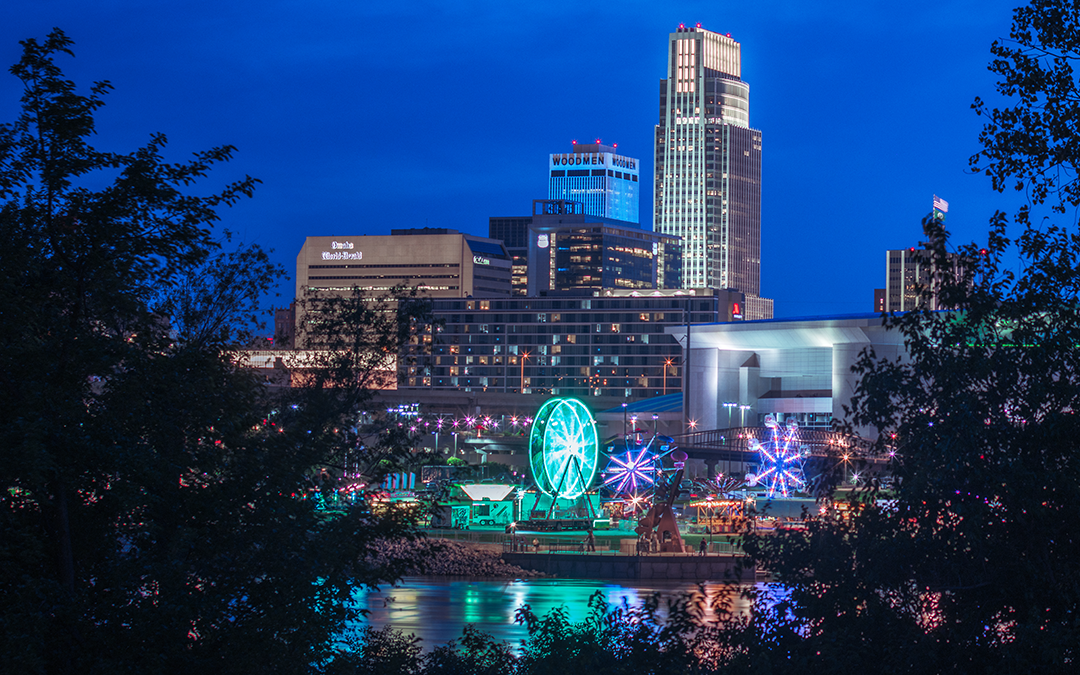Money isn’t everything – but it is something. And here, thanks to our lower cost of living, we can channel more of it into doing the things we love, saving for our kids’ educations, funding our retirements or supporting those charitable causes that are near and dear. For entrepreneur Kimberly Perkins, a lower cost of living has led to greater fulfillment.
“In the Silicon Valley, we couldn’t afford to go down to one income to pursue building our own company. We can do it here – and that’s made all the difference,” says Perkins who co-founded memosnag with her husband, Lorenzo Staunovo Polacco. They moved their family to Omaha from the bay area at the end of 2015 – and Perkins says she hasn’t looked back.
Right now, our overall cost of living is more than 8 percent below the national average. We spend less on housing (19.2 percent below the national average)[1] and less on groceries to stock the pantry (4.2 percent below the national average)[2]. Turns out, in addition to greater fiscal freedom and peace of mind, affordability also equals accolades.
“Home to titans of industry, a charming turn of the century downtown district, and a rocking music scene, Omaha is anything but a fly-over city. It ranks first on our list for recent college graduates because it strikes the rare balance of affordability, high job opportunity, and a great quality of life,” wrote Jeff Marino, ZipRecruiter’s data journalist, when he and his colleagues named Omaha the No 1 Best City for College Grads to Start Their Careers in 2018.
How does our overall cost of living compare to others cities? Favorably.[3]
- 2.7 percent lower than Kansas City
- 7.7 percent lower than Austin
- 8.1 percent lower than Colorado Springs
In Seattle, buying a home at the 2018 median sales price of $484,000 will get you 1,923 square feet. In Omaha, $484,000 will buy 3,546 square feet of house – nearly twice as much (1.8x).[4]

© kent sievers/omaha world-herald
Hand-in-hand with a lower cost of living, our business owners enjoy a lower cost of doing business – 6.1 percent lower than the national average.[5] That equates to a stronger bottom line and a greater chance of success for those, like Kimberly and Lorenzo, who are brave enough to convert ideas into tangible enterprises. (By the way, our entrepreneurs earn an income that’s twice as high as the national average – $62,665 (Omaha) vs $31,448 (U.S.)[6] Even better yet, our low cost of living and competitive wages create a spending power of $50,481 – 14.9 percent above nation’s ($43,925)[7].)
If you had more money in your pocket, what would you do with it: Boost the emergency fund? Support the arts? Sample more local restaurants – or start your own? A lower cost of living. A higher quality of life. It’s just one more way we excel at exceeding expectations.
We Rank
- #7/10 – Top 10 Cities in the U.S. for Young People – CNBC Money, 2018
- #7/25 – Top 25 Most Fun Cities for New College Grads Where Jobs Are Abundant and Housing Is Affordable – Business Insider, 2018
- #16/75 – The 75 Best Cities for Young Professionals, MSN Money, 2018
- #15/50 – 50 Cheapest Place to Retire, GOBankingRates, 2018
- #2/100 – Cities Where Renters Can Afford to Live Alone, SmartAsset, 2018
- #3/64 – Best Cities for First-time Homebuyers, SmartAsset, 2018
[1] Council for Community and Economic Research, Q1 2019 Annual Average
[2] Ibid
[3] Ibid
[4] Zillow.com and Zillow.com National Association of Realtors. 2018. "Single Family
1st Quarter 2018".(accessed June 28, 2018)
[5] KPMG, Competitive Alternatives 2016
[6] U.S. Department of Commerce, Bureau of Economic Analysis, “Tables CA25N & CA4”
[7] U.S. Bureau of Economic Analysis, “2015 Real per capita personal income
(chained (2009) dollars)”
Interested in doing business in Omaha?
We’re home to more than 45,000 businesses, including four Fortune 500 and five Fortune 1000 headquarters.

